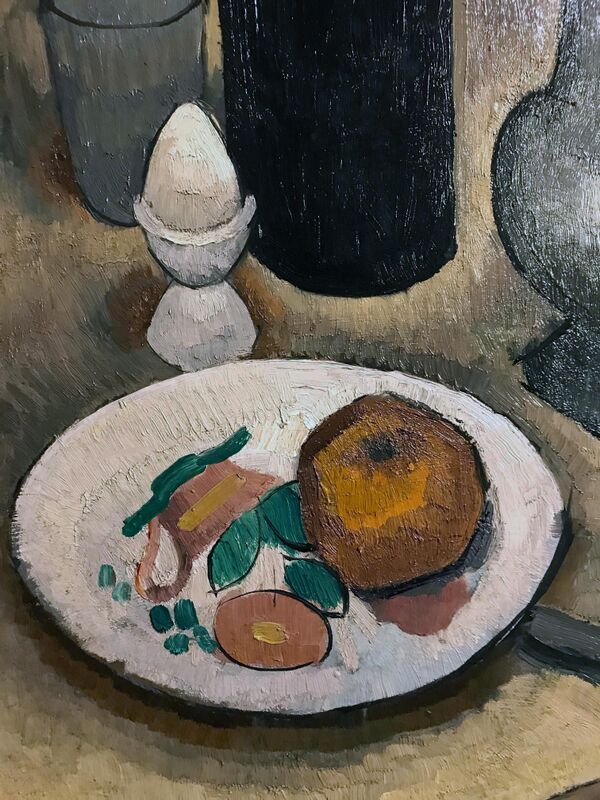Roger de la Fresnaye
(French, 1885-1925)
Roger de la Fresnaye was born into an aristocratic family in 1885 in the northern French city of Le Mans. Having undertaken artistic training at the Académie Julian and the École des Beaux-Arts, de la Fresnaye began to develop his own artistic identity at the Ranson Academy in Paris, under the tutelage of Maurice Denis. His early work was consequently influenced by the decorative simplifications of Denis' Symbolism, not to mention his poetic use of colour.
Shortly after leaving the Academy de la Fresnaye met Raymond Duchamp-Villon and was introduced to Cubism as practiced within the Section d'Or group. For a short time he experimented with form under the influence of Cezanne, producing studies reminiscent of Picasso's sculptural works of 1907-08. Unlike Picasso however, de la Fresnaye was not invested in Cubism as an exploration of form and space and like the other Section d'Or Cubists, saw the analytic style which followed from Picasso's 1907-08 works as colourless and impersonal.
Rather than follow the teachings of Picasso and Braque, de la Fresnaye chose not to compromise his earlier symbolist style. We therefore see his sculptural experimentations give way to a personal interpretation of Cubism as decorative, the forms in his outdoor scenes and still lifes denied of solid reality. Though his works consequently have a fragmented quality, this is concomitant with a delicacy of approach to form reminiscent of the flat pasted planes of Cubist collage rather than the earlier hermetic Cubism of Picasso and Braque.
By 1913 de La Fresnaye had found an affinity with Delauney's abstract and colourful 'Orphism', though in his case the flat planes of colour found realisation in figurative scenes and still lifes. By analogy with Delauney we could say that de la Fresnaye succeeded in reconciling his early Symbolist training with the new Cubist style.

